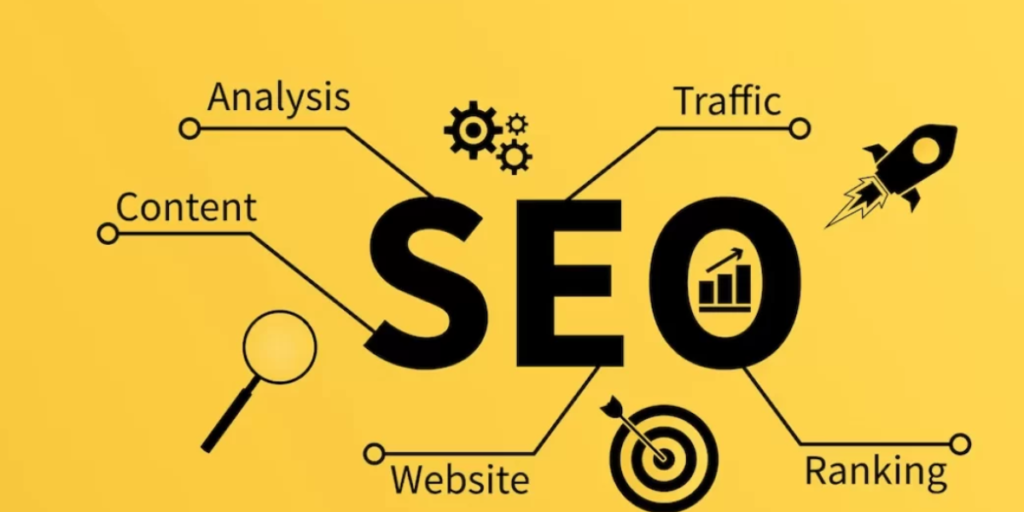SEO marketing, or Search Engine Optimization marketing, is a powerful digital strategy focused on improving a website’s visibility in organic search engine results. Unlike paid advertising, SEO targets users who are actively searching for specific products, services, or information, making it a highly intent-driven form of marketing. At its core, SEO involves optimizing content, site structure, and technical performance to help search engines like Google understand and rank your web pages effectively. As more consumers turn to search engines for decision-making, SEO marketing has become essential for any business looking to build a strong online presence. The long-term benefits of SEO include consistent traffic, lower customer acquisition costs, and increased credibility in the eyes of both users and search engines. Whether you’re running a blog, an eCommerce store, or a service-based business, SEO marketing offers a foundational strategy that fuels every other digital marketing effort, from content creation to social media engagement.
The Importance of Keyword Research
Effective SEO marketing begins with keyword research, the process of identifying the search terms your target audience uses when looking for products, services, or answers online. By selecting the right keywords, businesses can align their content with user intent and increase their chances of ranking higher in search engine results. Tools like Google Keyword Planner, Ahrefs, SEMrush, and Ubersuggest provide insights into keyword volume, difficulty, and trends. Long-tail keywords—phrases that are more specific and less competitive—often yield higher conversion rates because they reflect more targeted user intent. For example, instead of targeting a broad term like “shoes,” an eCommerce business might target “women’s waterproof hiking boots.” Incorporating these keywords naturally into content, headings, meta descriptions, and URLs is essential to successful SEO marketing. By understanding what people are searching for, businesses can develop content strategies that attract, engage, and convert potential customers more effectively.
On-Page SEO Best Practices
On-page SEO refers to the elements you can control on your website to improve its rankings in search results. This includes content quality, keyword placement, meta tags, image optimization, internal linking, and URL structure. High-quality, original content that satisfies user intent is the cornerstone of on-page SEO marketing. Content should be well-organized, easy to read, and provide value that addresses the searcher’s question or problem. Including your target keyword naturally within the first 100 words of your content, in H1 and H2 tags, and in image alt text helps search engines understand what the page is about. Internal links guide users through your site and distribute authority to important pages, while optimized URLs improve readability and ranking potential. Mobile responsiveness, fast page loading, and a clean design also enhance user experience, contributing to better engagement and SEO performance. On-page SEO marketing creates a strong foundation that allows your content to perform well across search engines.
The Role of Technical SEO
Technical SEO focuses on improving the backend structure of your website to ensure it is accessible and understandable to search engines. Key elements include website speed, mobile optimization, XML sitemaps, robots.txt files, HTTPS security, canonical tags, and structured data markup. Technical SEO ensures that your site is crawlable and indexable, which are prerequisites for ranking. Search engines use crawlers to scan websites, and if your site has broken links, duplicate content, or slow loading times, it can negatively impact your SEO marketing efforts. Tools like Google Search Console, Screaming Frog, and GTmetrix can help identify and fix technical issues that hinder performance. Structured data, also known as schema markup, enhances search listings with rich snippets, such as star ratings, pricing, and event information, improving click-through rates. For businesses invested in long-term eCommerce digital marketing, strong technical SEO ensures their content reaches audiences without being buried under technical inefficiencies.
Off-Page SEO and Link Building
Off-page SEO refers to activities performed outside of your website to improve its authority and ranking in search engine results. The most prominent aspect of off-page SEO is link building—earning backlinks from reputable websites. These backlinks act as votes of confidence, signaling to search engines that your content is trustworthy and valuable. Not all backlinks are created equal; links from high-authority sites within your niche have a greater positive impact than links from irrelevant or spammy sites. Strategies for acquiring backlinks include guest blogging, digital PR, influencer outreach, and content partnerships. Social media shares, online reviews, and brand mentions also play supporting roles in off-page SEO marketing. Building a diverse and natural backlink profile over time enhances your site’s credibility and helps it climb the search rankings. In the competitive world of SEO marketing, off-page strategies can make the difference between a page that gets lost and one that becomes a traffic magnet.
Local SEO for Geographic Visibility

Local SEO is a subset of SEO marketing focused on optimizing your online presence to attract more business from relevant local searches. This is especially important for brick-and-mortar stores, service providers, and regional eCommerce operations. Local SEO techniques include creating and optimizing a Google Business Profile, earning positive local reviews, building local citations, and using localized keywords such as “best bakery in Brooklyn” or “plumber near me.” A fully optimized Google Business Profile can help your business appear in Google’s local pack, map results, and knowledge panels, providing high visibility for potential customers. Additionally, ensuring NAP consistency (Name, Address, Phone number) across all online directories boosts local SEO credibility. Mobile searches with local intent are on the rise, and businesses that implement robust local SEO marketing strategies are better positioned to capture these high-converting users.
Content Marketing and SEO Synergy
Content marketing and SEO marketing go hand-in-hand. While SEO ensures your content is discoverable, content marketing ensures it’s valuable enough to retain and convert visitors. Creating in-depth blog posts, guides, videos, and infographics that are optimized for specific keywords can boost your site’s authority and drive long-term organic traffic. Evergreen content, which remains relevant over time, is particularly valuable for SEO as it continues to attract search engine traffic well after publication. Content should answer specific questions, solve problems, and include clear calls to action to guide readers toward conversion. Updating older content with new information and improved optimization also supports sustained performance in search rankings. In eCommerce digital marketing, product descriptions, category pages, and buyer guides are all content types that benefit from thoughtful SEO integration. The more relevant and helpful your content is, the more likely it is to earn backlinks, improve dwell time, and convert traffic into sales.
User Experience and Its Influence on SEO
Search engines increasingly prioritize user experience (UX) as a ranking factor, making it an essential part of SEO marketing. UX encompasses site navigation, layout, page speed, mobile responsiveness, and overall ease of use. Google’s Core Web Vitals—metrics that assess load time, interactivity, and visual stability—are now a critical part of its ranking algorithm. A well-designed website that’s easy to navigate not only keeps users engaged but also signals to search engines that your content meets user expectations. High bounce rates, low dwell time, and poor mobile usability can negatively impact rankings, even if the content is well-optimized. Improving UX leads to higher engagement, lower exit rates, and increased chances of conversions. For eCommerce businesses, intuitive design, fast checkout processes, and clear product pages enhance both UX and SEO outcomes. As SEO marketing evolves, focusing on the end-user experience has become just as important as targeting the right keywords.
Analytics and SEO Performance Tracking
Tracking and analyzing SEO performance is crucial to understand what’s working and where improvements are needed. Tools like Google Analytics, Google Search Console, and third-party platforms such as Ahrefs or SEMrush offer insights into traffic sources, keyword rankings, backlink profiles, and user behavior. Monitoring metrics such as organic traffic, bounce rates, session duration, and goal conversions helps refine your SEO marketing strategies. Google Search Console, in particular, reveals how your site appears in search results, which queries drive traffic, and where improvements in click-through rate or indexing might be needed. Heatmaps and user behavior tracking tools like Hotjar can identify friction points on your website. By consistently analyzing performance data, marketers can test new strategies, fix underperforming content, and adapt to search engine algorithm changes. In SEO marketing, data-driven decision-making separates guesswork from growth and ensures every optimization effort is grounded in real-world outcomes.
SEO Trends and Future-Proofing Your Strategy
SEO marketing is a constantly evolving discipline, influenced by changes in technology, user behavior, and search engine algorithms. Voice search, visual search, AI-generated content, and the increasing importance of E-E-A-T (Experience, Expertise, Authoritativeness, Trustworthiness) are shaping the future of SEO. To remain competitive, marketers must stay informed and agile, regularly updating their strategies based on emerging trends. Core updates from Google can shift rankings dramatically, so staying compliant with best practices and maintaining a diversified content strategy is key to long-term stability. Semantic search and AI tools like ChatGPT are changing how content is created and consumed, making it even more important to write for humans while optimizing for machines. Structured content, rich snippets, and zero-click searches are also gaining traction. By proactively adapting your SEO marketing strategies to these changes, you position your website for lasting visibility and relevance in an increasingly crowded digital space.
Conclusion: Building a Strong Foundation with SEO
SEO marketing is not just a digital strategy—it’s a long-term investment in visibility, credibility, and growth. It plays a pivotal role in helping businesses attract qualified traffic, improve engagement, and generate sustainable results without ongoing ad spend. When integrated with other channels like content marketing, UX design, and analytics, SEO becomes a force multiplier in your digital marketing toolkit. From keyword research and technical optimization to user experience and link building, every element of SEO marketing works together to create a cohesive and competitive online presence. Especially for businesses in eCommerce and service industries, a robust SEO strategy ensures you’re not just found, but chosen by the right audience. In a landscape where trust, relevance, and accessibility determine success, SEO remains one of the most reliable and scalable marketing tools available.
















